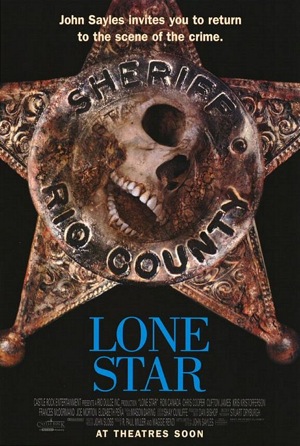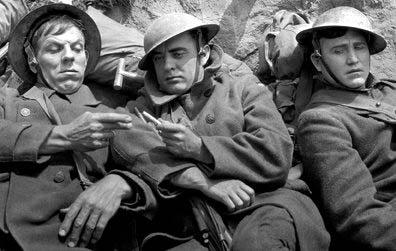 ”You live in a place; you should learn something about it.”
”You live in a place; you should learn something about it.”
Since his very first film, The Return of the Secaucus Seven, writer/director John Sayles’ commitment to being truly independent has been a model for all aspiring filmmakers. He continues to write and direct movies about subject matters that he’s interested in and not catering to the whims and desires of a film executive watching the bottom line. His long list of diverse films include the 1920’a Virginia mining drama, Matewan, his account of the 1919 Chicago Black Sox scandal, Eight Men Out, the Cajun dramedy, Passion Fish, and the Irish fable, The Secret of Roan Inish.
Sayles is a consummate storyteller maintaining control over his stories has been the priority from day one. When the independent revolution of the 1990’s occurred, it made sense that Sayles was at the forefront of the movement. His modern western, Lone Star was released in 1996, the peak of that period of film independence. Rightly so, it became his most successful film to date.
Lone Star is a complex film about community, secrets and parenthood. It’s also about the many forms of love and what we’re willing to sacrifice for it. The movie opens with two Army men (Stephen Mendillo and Stephen J. Lang) standing in the middle of a Texas wilderness. One is identifying various local fauna, while his companion scans the desert floor with a metal detector. A skull is found, next to is a Mason’s ring. Soon thereafter, a white sedan barrels across gravel and we meet Sam Deeds (Chris Cooper), the weary sheriff of Rio County, TX. When a rusty old badge is dug up several feet from the skull and ring, the sheriff has a pretty good clue about the identity of these skeletal remains.
He believes they belong to Charlie Wade, the former sheriff of Rio County who disappeared decades earlier. Wade, played menacingly by Kris Kristofferson in flashbacks, was one of those bribe or bullets racist lawmen who had his hand in everything during a reign in the 50’s. Hated by everyone, no one shed a tear when Wade went missing. After Wade was gone, Sam’s father, Buddy Deeds (played by a young Matthew McConaughey in flashbacks), became sheriff and soon a local legend. On the eve of the unveiling of a memorial in honor of Buddy Deeds, Sam sets out to determine whether his father murdered Wade and dumped his body in the middle of nowhere.
As Sam digs deeper, he uncovers truths that most of the old timers would prefer never resurface. Interviewing prominent figures in the community who were around when Wade went missing and Buddy came into power. As these characters recall the past, Sayles uses simple camera moves and the placement of his actors to make the transitions from past to present and back again seamless. There is only one dissolve into a flashback, the rest all happen within the scene.
Although the murder mystery is the starting off point for the film, it is not the sole focus of Lone Star. This is a film about a community and how the secrets of the past effect the present. Receiving equal screen time are the local bar owner, Big O’ (Ron Canada), Mercedes Cruz (Miriam Colon), owner of a popular Mexican restaurant, and her daughter, Pilar (Elizabeth Pena), a high school history teacher who was once Sam’s high school love. The discovery of that skull not only unearths the secrets of the past, but also shows how so many people in this small Texas border town are bound together.
Running parallel to murder mystery is a plot involving Big O’ and his son, Del (the great Joe Morton), an Army Colonel assigned to close down the local base. Del and his father have not been on speaking terms for so long that the only way Del knows how to communicate with his father is on official terms (when one of his soldiers is shot in a bar fight). Del makes his own discoveries about his own father and his outlook on life changes, leading to an optimistic ending for the father and son.
As the film progresses, the audience wonders whether he’s really out to solve a crime, or if his motivation is really to bring down his father’s legacy. Although Buddy Deeds may be a legend, through Sam’s eyes he was just as corrupt as Charlie Wade. Moreover, Sam has a bitter place in his heart over the way Buddy forced Plar and him to break up. Having not seen her since Buddy made them separate, Sam has always carried a torch for her, even when he moved to Dallas, where he got married and divorced. As Sam admits to Pilar, a young widow with two teenage children, the only reason he returned to his hometown was because she was there.
As the multiple stories play out, in the background racial tensions flare between the Anglos and the Mexicans, while the African-Americans ponder their place in this setting. Many complex questions are posed to the audience with many of them left unresolved, leaving it up to us to find solutions. There are so many themes working in Lone Star that repeated viewings usually uncover some other element of the movie that I didn’t see before. Still, what continues to draw me back and make this one of the most inspiring films I’ve ever seen is the effortless combination of style and substance.
When I decided to become a filmmaker, I was never interested in making millions of dollars and being a king of the entertainment industry. Did I dream of awards and being successful? Of course, but my aspirations weren’t to go out and make the biggest and loudest blockbusters of all time. Instead, I was interested in being able to maintain a standard of quality and box office appeal that would allow me to write and direct the kind of stories I wanted to write. You can see why I’ve admired John Sayles for such a long time.
The opportunity to direct King’s Highway was handed to me in 2001 and Sayles was on heavily on my mind. Having read the 1998 book, Sayles on Sayles, edited by Gavin Smith of Film Comment, I had a quote from that book in mind. When discussing The Return of the Secaucus Seven, Sayles’ philosophy was, ”I want to make a move myself. Yes, it is an audition piece, but on the other hand, this may be the only time I get to do this. So why make someone else’s movie?” I took what Sayles said to heart throughout the course of King’s Highway. Whether it’s a success or failure is up to the viewers, but I’ll go to my grave knowing that the final cut of King’s Highway was what I wanted.
I had bought that book for the sole purpose of reading about Lone Star. The film’s handling of complicated themes of love and fatherhood informed how I wrote King’s Highway. Its inventive method of dealing with flashbacks was a great influence on me when it came time to handle the flashbacks in my own film. Finally, Sayles’ spirit of independence shaped the way King’s Highway was completed and acted as a reminder of the kind of storyteller I will strive to be until someone pries the Bic pen out of my hand.
There isn’t a trailer for next week’s movie, but here is a still from the film I’ll be talking about. You can also see a film clip here.






Comments